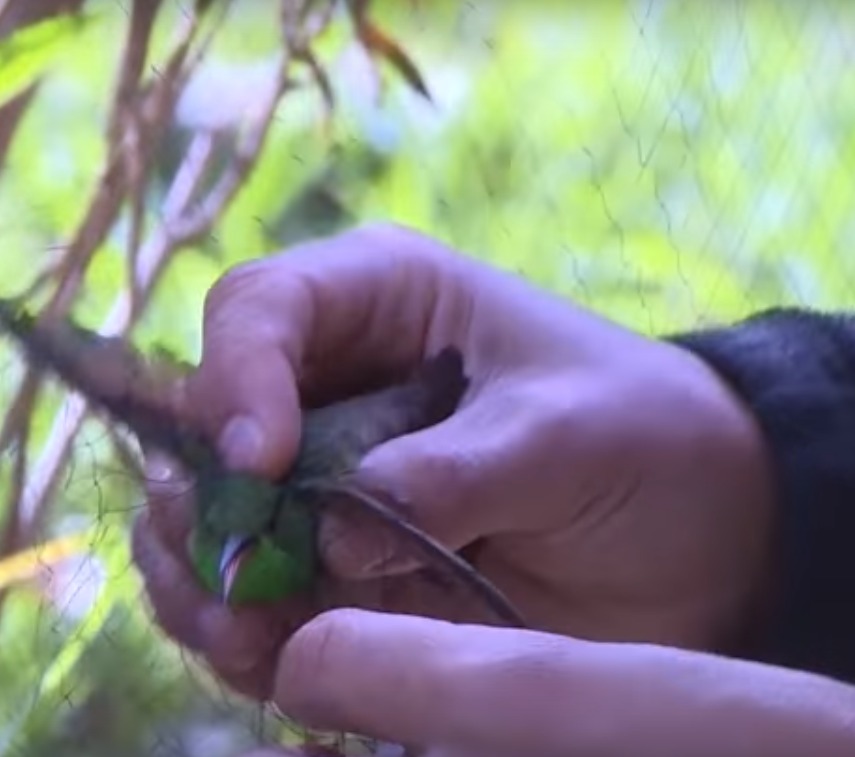
The objective of this research was to describe the interaction between a botanical garden with 20% sucrose drinkers and BEARDED HUMMINGBIRD (Oxypogon cyanolaemus), in a wild environment, in the Sierra Nevada de Santa Marta, Colombia. Once the existence of the interaction was verified, the morphology, taxonomic composition, richness and abundance of the BEARDED HUMMINGBIRD species (Oxypogon cyanolaemus), identified as floral visitors, as well as cephalic and buccal morphometry were characterized. BEARDED HUMMINGBIRD (Oxypogon cyanolaemus), identified, presents as a whole behavioral and morphological characteristics associated with high-efficiency pollinators, with a high visitation rate, rocker activation capacity and maximum body contact of the bird with the anthers and stigma of the flower Additionally, hummingbirds have a very high load of pollen grains of flowers of native species on the body and low investment of time in cleaning your body (grooming). The flowers visited by these birds gave rise to fruits. All of the above allows us to conclude that the conservation status of this critically threatened bird species is favored with botanical gardens with sugary drinking fountains, increasing the pollination rate in its surroundings, generating a type of commensalism.
Keywords. Commensalism, hummingbirds, botanical garden, sugary drinking fountain, pollination, native species.
